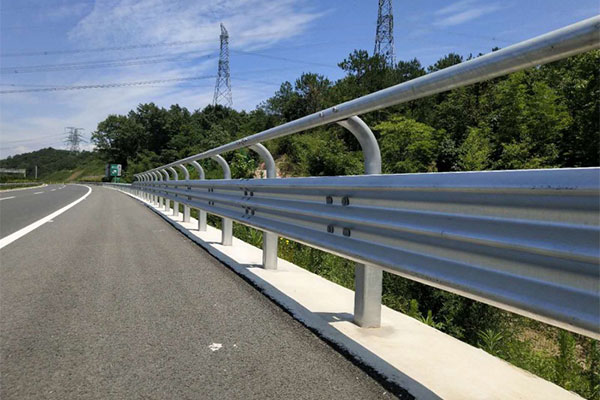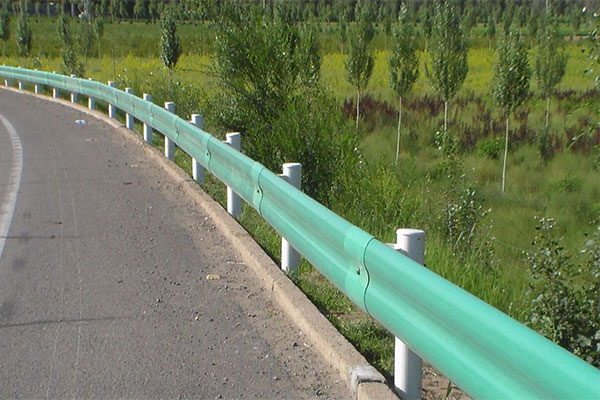Guardrails: A Crucial Safety Feature on Highways
Guardrails are a common feature on highways and other roads, providing a physical barrier between vehicles and hazards such as steep drop-offs, embankments, and other objects. The purpose of guardrails is to protect motorists and passengers from serious injuries or fatalities in the event of a collision or accident. However, not all roads require guardrails, and their installation depends on a variety of factors.

Factors Determining Guardrail Installation
There are several factors that determine whether or not a guardrail is required on a particular road. These include:
- Speed Limit: The speed limit on the road is one of the most important factors in determining the need for guardrails. Generally, if a road has a speed limit of 45 miles per hour or higher, it is more likely to require guardrails.
- Traffic Volume: Another factor that plays a role in determining the need for guardrails is the volume of traffic on the road. Roads with high traffic volume are more likely to require guardrails because there is a greater risk of collisions and accidents.
- Road Geometry: The geometry of the road also plays a role in determining whether or not a guardrail is required. Roads with sharp curves, steep embankments, or drop-offs are more likely to require guardrails to prevent accidents.
- Surrounding Environment: The environment surrounding the road can also affect the need for guardrails. For example, if there are buildings or other structures close to the road, guardrails may be necessary to prevent vehicles from colliding with them.
- History of Accidents: The history of accidents on the road is another important factor to consider when determining the need for guardrails. If there have been a significant number of accidents on a particular stretch of road, it may be necessary to install guardrails to prevent future accidents.
Types of Guardrails
There are several types of guardrails that can be used on roads, depending on the specific needs of the road and its users. The most common types of guardrails include:
- W-beam Guardrails: W-beam guardrails are the most common type of guardrail used on roads. They consist of a series of steel beams that are mounted on posts and designed to absorb the impact of a collision. W-beam guardrails are effective at preventing vehicles from crossing into oncoming traffic or leaving the road altogether.
- Cable Guardrails: Cable guardrails are another type of guardrail that is becoming increasingly popular on highways and other roads. They consist of high-tension cables that are mounted on posts and designed to absorb the impact of a collision. Cable guardrails are effective at preventing vehicles from crossing into oncoming traffic or leaving the road altogether.
- Concrete Barrier Guardrails: Concrete barrier guardrails are a type of guardrail that is typically used on highways and other high-speed roads. They consist of concrete barriers that are mounted on posts and designed to absorb the impact of a collision. Concrete barrier guardrails are very effective at preventing vehicles from crossing into oncoming traffic or leaving the road altogether.

When Are Guardrails Required on Roads?
- High-Speed Roads: As mentioned earlier, roads with speed limits of 45 miles per hour or higher are more likely to require guardrails. This is because higher speeds increase the risk of serious accidents, and guardrails can help prevent fatalities and serious injuries.
- Curves and Drop-Offs: Roads with sharp curves and steep drop-offs are also more likely to require guardrails to prevent accidents. The geometry of the road can make it difficult for drivers to stay on the road, especially if they are traveling at high speeds or are distracted. Guardrails can provide a physical barrier that helps keep vehicles on the road and prevent them from going off the edge.
- Bridges and Overpasses: Bridges and overpasses are another area where guardrails are often required. These structures are typically elevated and have limited space for vehicles to maneuver, making them more prone to accidents. Guardrails can help prevent vehicles from colliding with the sides of bridges and overpasses and falling off the edge.
- Steep Embankments: Roads with steep embankments or slopes are also more likely to require guardrails. These embankments can be difficult to navigate, especially in inclement weather conditions or if the driver is not paying attention. Guardrails can help prevent vehicles from sliding down the embankment and provide a physical barrier to protect motorists.
- Accident History: As mentioned earlier, the history of accidents on a particular road is an important factor to consider when determining the need for guardrails. If there have been several accidents on a particular stretch of road, it may be necessary to install guardrails to prevent future accidents.
Conclusion
Guardrails are an essential safety feature on roads and highways, providing a physical barrier between vehicles and hazards. The installation of guardrails depends on several factors, including speed limits, traffic volume, road geometry, surrounding environment, and accident history. The most common types of guardrails include W-beam guardrails, cable guardrails, and concrete barrier guardrails. If you are driving on a road with a high speed limit, sharp curves, steep embankments, or a history of accidents, it is important to be aware of the presence of guardrails and to drive safely to avoid accidents.

